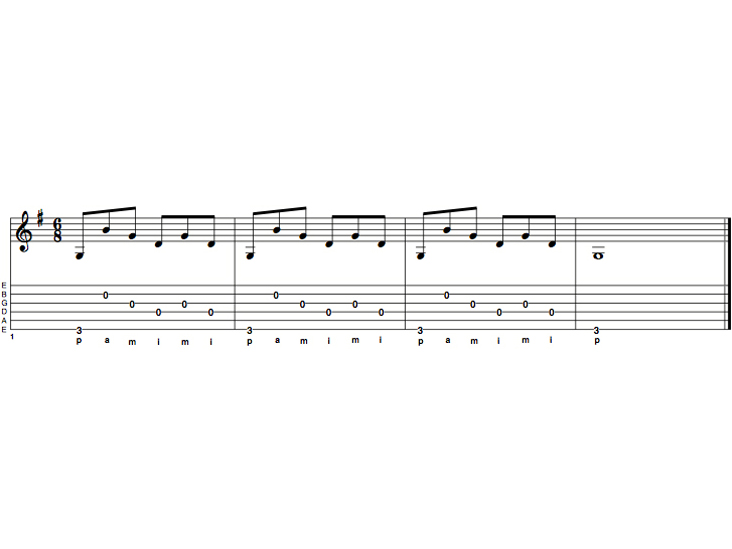
Playing acoustic guitar: fingerstyle
ACOUSTIC WEEK Fingerstyle playing can be an extremely rewarding experience for several reasons.
Firstly, you feel much more 'connected' to the guitar, and the combination of finger tip and nail imparts a really warm sound from both nylon and steel strings. Many of the guitarists featured in our following Style File section are exponents of this technique.
The basic concept of fingerstyle, is to use the thumb and first three fingers to pick the strings. This provides plenty of scope to construct interesting arrangements for the acoustic guitar. In fact, to use the analogy of an orchestra, think of your thumb as the basses, bass drum and timpani, providing the low notes and fundamental rhythm. The fingers represent the rest of the orchestra, adding harmony and melody and reinforcing the basic rhythm set down by the thumb. When you think about it, every music from classical, to country to hip hop works pretty much on this concept!
There is no single way to play fingerstyle guitar. Many famous players use completely different approaches, and all manage to achieve great results. However, the following technique is a very effective starting point: Avoid resting the hand or wrist on the guitar for support. Relax your right hand just above the soundhole so you can comfortably reach the strings with the tips of your thumb and fingers.
Now, starting with your thumb, practise gently plucking downwards on the 6th (E) string four times slowly. Then move onto the next string and so on until you reach the 1st (E) string and then work your way back again. You should maintain an equal volume at all times. Your arm and wrist should remain relaxed and move as little as possible and the plucking action should come from the whole of the thumb (not just from the upper joint). Now repeat the exercise with your first finger, plucking upwards. The power of the stroke should come from your knuckle. You should see your finger gently curl as it hits the string and continue to follow through afterwards.
Try not to 'snatch' the string. Repeat the same exercise with the middle and ring finger. At first you may have difficulty accurately targeting the strings, but you'll be surprised how quickly this improves with practice. Your patience will be rewarded!

Playing acoustic guitar: fingerstyle
As we mentioned earlier, it’s a good idea to think of the thumb and fingers acting independently of one another in fingerstyle.
The thumb’s main purpose is to provide solid bass and rhythm. A common way to achieve this, is to have the thumb play the root note of the chord on beat 1 of the bar, and the fifth note of the chord on beat 3. So, in our first example, using a G Major chord, we will have the thumb play the root note G on beat 1 and the fifth note (D) on beat 3.

Playing acoustic guitar: fingerstyle
Now we have the foundations in place, we’ll bring in the fingers to provide the rest of the harmony and ‘secondary’ rhythm.
Use your 1st, 2nd and 3rd fingers to simultaneously pluck the top 3 strings in the chord. (Notes G, B and G). Alternatively you can strum these top notes instead using the nail of your 1st finger in a downward motion.

Playing acoustic guitar: fingerstyle
You can vary this sequence in many ways by getting the fingers to play in a different order.
Nowadays, many acoustic players have discovered the benefits of using both a pick and fingers. The pick naturally gives you more volume, which helps to drive your bass lines along confidently, whilst the fingers can often add more detail than just using a pick.
As a general rule, use the pick to replace any notes that were played by the thumb and first finger. The action of your 2nd and 3rd fingers will remain the same. Armed with these techniques and a handful of chords you’ll be surprised at how much you can achieve. Many hit songs have been written in this way!
Guitarist is the longest established UK guitar magazine, offering gear reviews, artist interviews, techniques lessons and loads more, in print, on tablet and on smartphones
Digital: http://bit.ly/GuitaristiOS
If you love guitars, you'll love Guitarist. Find us in print, on Newsstand for iPad, iPhone and other digital readers



